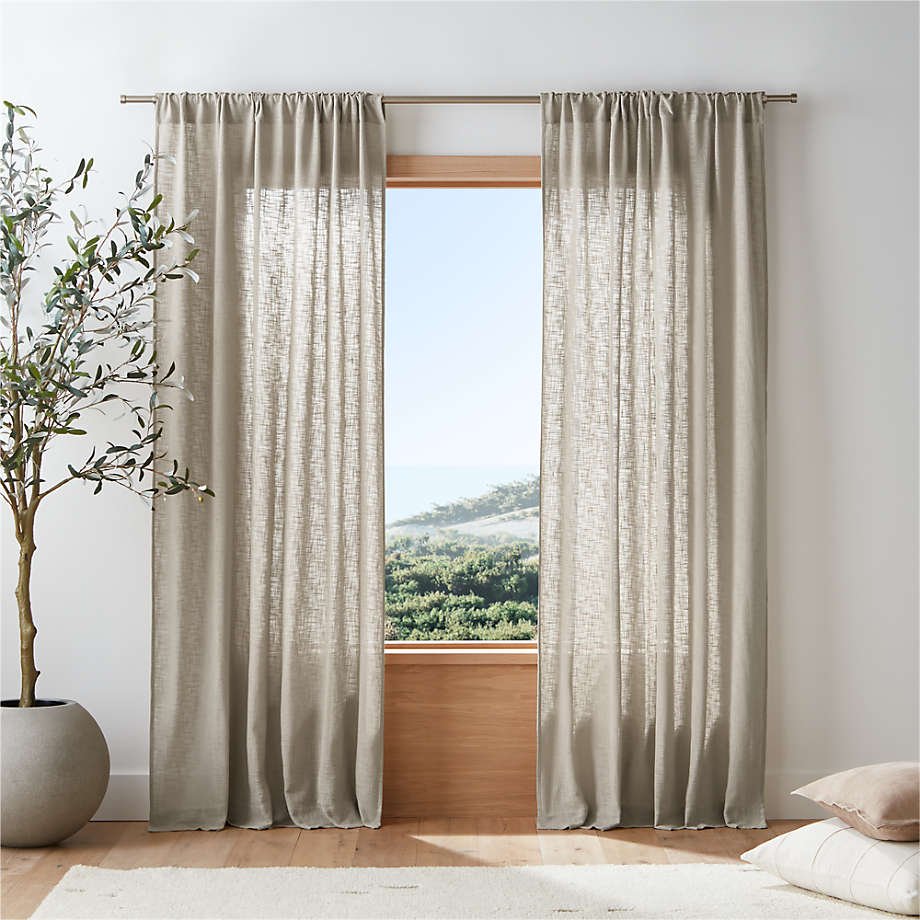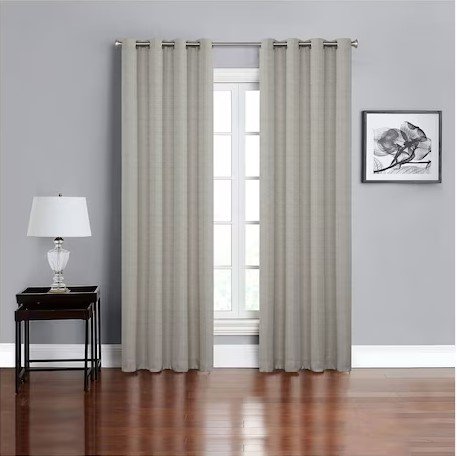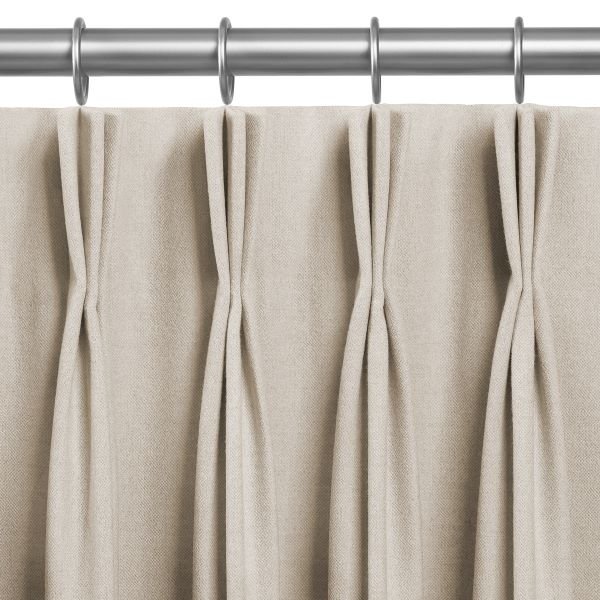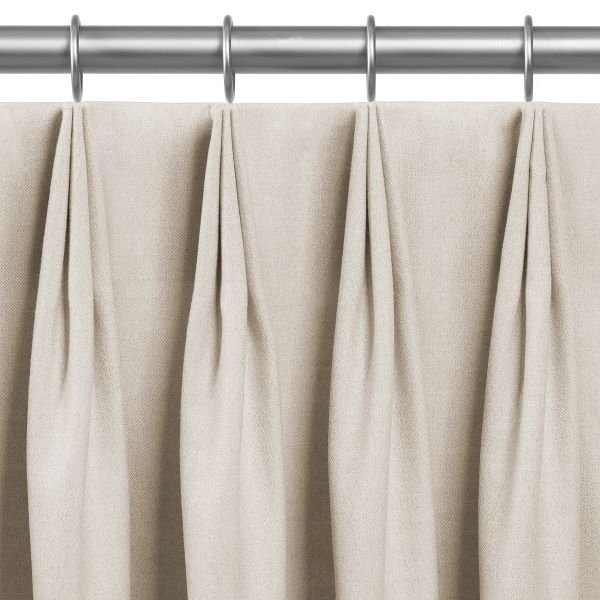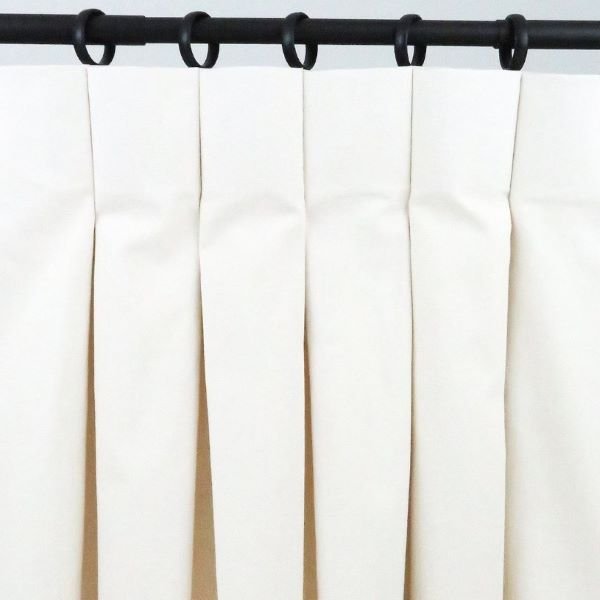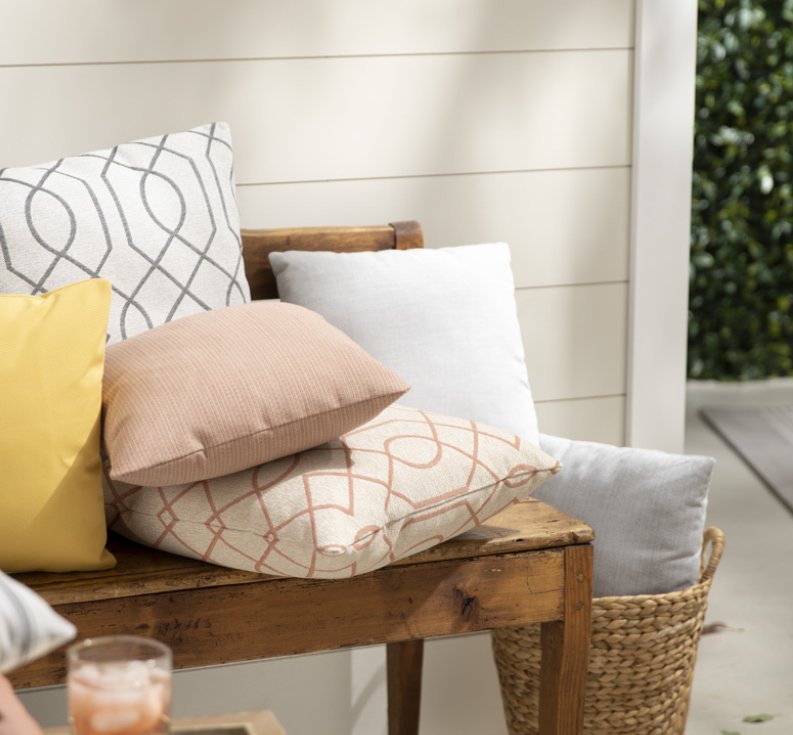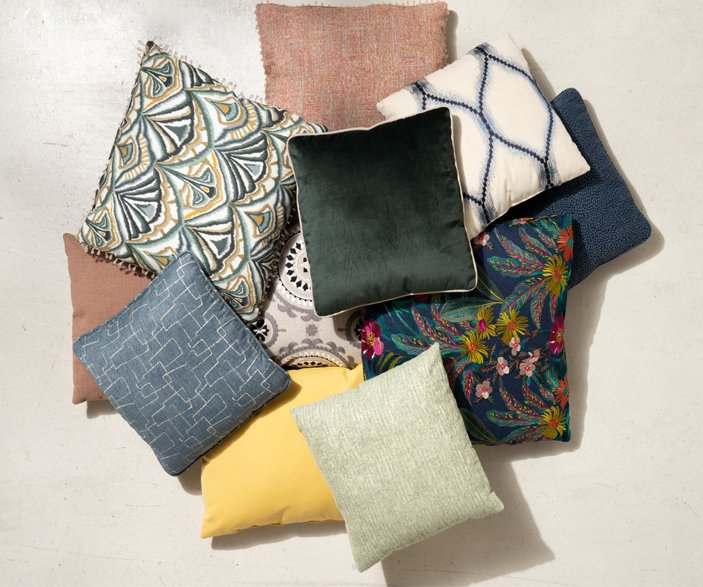Drapes vs Curtains
Ok, so what’s the difference between curtains & drapes? IS there a difference? Well, it depends on who you ask. But since you’re here, I’m going to share my thoughts on the subject.
Window coverings go by many different names, including window treatments. There are a plethora of different generic names window coverings from blinds, shades, sheers, drapes, curtains and shutters. And each of those can have many different styles that fall under them. For the purpose of this post, we are talking about drapes vs curtains.
So here's the deal:
CURTAINS
Curtains are typically off-the-shelf or ready-made fabric panels that come in a few different sizes. They can vary in texture and pattern, and are made from one single layer of fabric. Curtains can come in sheer, light filtering or room darkening opacities. A room darkening (or black-out) curtain is most often made with a vinyl or plastic coating applied to the back of the fabric to stop light from passing through.
Ready-made curtains are typically about 48"-52" wide because fabrics are most often made in 54" wide bolts. When a curtain is closed, the fabric is often stretched to as far as it can go, so it looks like a flat sheet - or shower curtain. That fullness can depend on the style of curtain it is.
Curtains come in single width panels, so for windows or doors wider than 100" you will need to use several panels and can end up with gaps between the panels which lets light through. However, with curtains you are limited by how wide you can go. Most off the shelf curtains are either grommet top, tab top, or pocket top. All of heading styles mean that the panel itself is fed over the curtain rod. Most off the shelf curtain hardware are adjustable width, which makes them flimsy. The heavier the curtains, the more brackets you need to support them. But a curtain panel cannot pass by a bracket, hence the limitation on width. Most hardware store or box store curtain rods come with 3 brackets; one on each end and one in the middle. The span between brackets is where the curtain panels will be able to operate.
Curtains typically come in only a couple of options for length, most commonly they are 60", 72" and 84" but they can be found in incremental lengths every 12" between 4' - 9'. Often curtains are purchased and/or installed so they hang to just below the window sill, which is a very simplistic (and in my opinion out-dated) look.
Curtains can be a very good, cost effective solution in the right scenario. They can be used as stationary side panels to add a splash of colour or texture to a window or patio doors that have another functional window treatment on them. Adding layers creates a cozy look and feel. Just be sure to invest in a curtain rod that is the right width (not adjustable) and that your panels are mounted well above the window header, and reach all the way to the floor.
DRAPES
Drapes (also called drapery or draperies) are the bigger, wiser sister to curtains. Drapes are more purposeful than curtains. In short, drapes are custom designed and manufactured for each application. Precise measurements and specifically chosen details mean that you are getting the perfect solution. Of course drapes are a larger investment than curtains, but they are going to work harder and look nicer.
Width and length are not limitations with custom drapes. Several “widths” of fabric are sewn together to make the drapery panels as wide as they need to be. The length is entirely customizable, and customers can choose whether the drapes sit just above the floor (approx. ¼”), touching the floor, or puddling on the floor (which is known as a “trouser break”). Ideally drapes should be wider than the window or door so that the stack does not block any view or light when they are open, this also makes the window look bigger. They should be installed higher than the top of the windows, and can go floor to ceiling in many cases. The longer drapes will draw the eye up creating a feeling of higher ceilings.
Drapes have many different heading style options. Some of the most common are; Pinch Pleated drapes, Euro (or top-tack) Pleated drapes, Inverted (or box) Pleated drapes and Ripplefold (or Roll Pleat) drapes. There are also many other styles which can be very simple or very intricate.
Trims and embellishments are very popular with custom drapes. They can be as simple as colour blocking or edge banding, or more intricate with bobble trim, jeweled trim or gimp details. You are really only limited by your creativity, although we tend to keep things fairly simple and add embellishments conservatively so that they don’t look too fussy.
Drapery tie backs can be added to swag the panels back when open. This is a more traditional look and can be accomplished with further embellishments if desired. Hold backs can also be a fixed metal or wood post that matches the drapery hardware and is attached to the wall behind the drapes so they are hidden when the drapes are closed, and can be swagged back and held open by the tie back.
Drapery Hardware
Drapery hardware is often considered the jewelry of your drapes. There are quite literally thousands of options to chose from. Which is why we work with our clients to suggest the best option for them. The most important part of hardware selection is the functionality. The hardware style depends partly on the pleat or heading style of the drapes. A pleated drape uses different hardware than a ripplefold drape. The best type of hardware for any heading style is a channel rod system. With this type of system, the drapery rod has a channel in the bottom where glides or slides are inserted and can traverse smoothly along the entire width of the rod, without being impeded by brackets.
Some people like the look of rings on their drapes, which brings us back to the width limitation. Traditional drapery rings cannot navigate past a bracket, so you are limited to about 6’-7’ wide depending on the weight of your drapes. There are also bi-pass rings, which are shaped like a C rather than a full circle, and can slide past a bi-pass bracket. This option works for sheers or light weight drapes, but isn’t recommended for really wide applications or black-out drapes as there is too much friction for them to operate smoothly. There are some channel systems available with “faux rings” to give the appearance of drapery rings, but the functionality of a channel rod.
Drapes can be made in sheer, semi-sheer, light filtering, dim-out and room darkening opacities. Sheers and semi-sheers do not have a liner and provide daytime privacy and some light control. A typical light filtering drape has a liner which is attached at the top and sides, but flows freely. The liner provides a little more insulation and light filtering as well as protecting the drapes from UV rays. They also give the drapes a fuller, more custom look. Liners can also be in a dim-out or black-out material for more light control.
Take your drapes one step further with motorization. Motorized or automated drapes give you the ultimate control over your light and privacy. Power Drapery hardware comes in many options and can even be made to go around corners or in bay windows. Drapes can be operated via a remote control or, in many cases, with a smart phone app. They can even be integrated into your whole home automation and controlled by your voice via Alexa, Google Home or Siri.
With custom drapes, the possibilities really are endless. If you aren’t sure where to start, we offer a free consultation to walk you through every step.
There is a lot to consider when investing in window treatments and it’s hard to know how much to invest. That’s why we created this free window treatment pricing guide. It’s a free download with TONNES of info that you can use, and price comparisons of all different types of window treatments.

